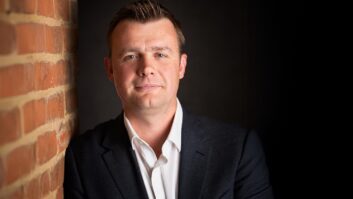In its latest report, Media infrastructure utilisation matters, Caretta Research highlights the growth in demand for dynamic media operations as broadcasters recognise that facilities are only in use for short periods of time.
The research found productions are increasingly shifting towards software-defined workflows using commodity-off-the-shelf (COTS) hardware, with one European public service broadcaster estimating its studio utilisation at less than ten per cent.
However, despite understanding the enhanced scalability and flexibility provided by dynamic operations, some within the industry are experiencing problems with forecasting total cost of ownership and uncertainty around charging with pay-as-you-go software licensing models. The research suggests these represent significant barriers and are inhibiting the transition to software-based operations.
Underutilisation represents a significant financial penalty which could be negated by shifting to flexible, software-on-COTS solutions, said the report, with media companies able to rapidly reconfigure resources to meet changes in demand and reduce wastage of resources such as rackspace, electricity and cooling.
Ed Barton, research director at Caretta Research, commented, “Low and unmeasured utilisation delivers huge inefficiencies in traditional media operations. While the industry clearly sees the value in moving everything to software, vendors must step up to simplify pricing, provide predictability and help buyers accelerate transition to these new models.”
The report outlines the following key considerations:
- Total cost of ownership (TCO): Calculated over three to five years, it encompasses upfront costs as well as ongoing expenses like cooling, electricity, maintenance, staffing and support.
- CAPEX vs. OPEX preferences: The choice between capital expenditure (CAPEX) and operational expenditure (OPEX) is rooted in past habits. Broadcasters often adopt a hybrid approach, valuing cost predictability while fearing excessive overage costs from services using pay-as-you-go pricing.
- Longevity and predictability of systems: Broadcasters are conservative about changing core systems, preferring software that can last for decades and can be reluctant to enter agreements with rapidly evolving technologies.
- Infrastructure utilisation: Monitoring system usage is crucial for efficiency and ROI. Broadcasters typically spec facilities close to top-level capacity, offloading to cloud platforms for infrequent, high-burst demands, to avoid maintaining equipment for rare peak demands.
- Flexibility and scalability: There is strong desire for virtualised, software-based solutions on commercial off-the-shelf (COTS) hardware, allowing for easy workload movement and flexible licensing for event-based or short-term needs.
- Vendor support and continuous upgrades: Broadcasters expect all upgrades, including security updates, to be part of the package. However, they are wary of hidden service-level agreement (SLA) costs in flexible licensing models.
- Management overhead of flexible systems: A significant concern with floating license or credit-based systems is the perceived complexity and administrative burden, stemming from past issues with licensing servers and tracking usage.
The research suggested that organisations embracing dynamic operations are more able to optimise their technology spend and enhance competitiveness, providing better programming in more efficient ways. The findings are available for download here: https://www.carettaresearch.com/downloads/media-infrastructure-research.







